Officer Training School, 1917
By Marg Powell, Specialist Library Technician, Metadata Services | 18 March 2016
The high number of casualties in the first two years of the First World War meant there was also a shortage of trained and able Officers to lead and support the other ranks. Allied soldiers selected for Officer training, were withdrawn from their units to attend schools in France and England, they also attended specialist courses on tactics and weaponry, including the use of poisonous gas.
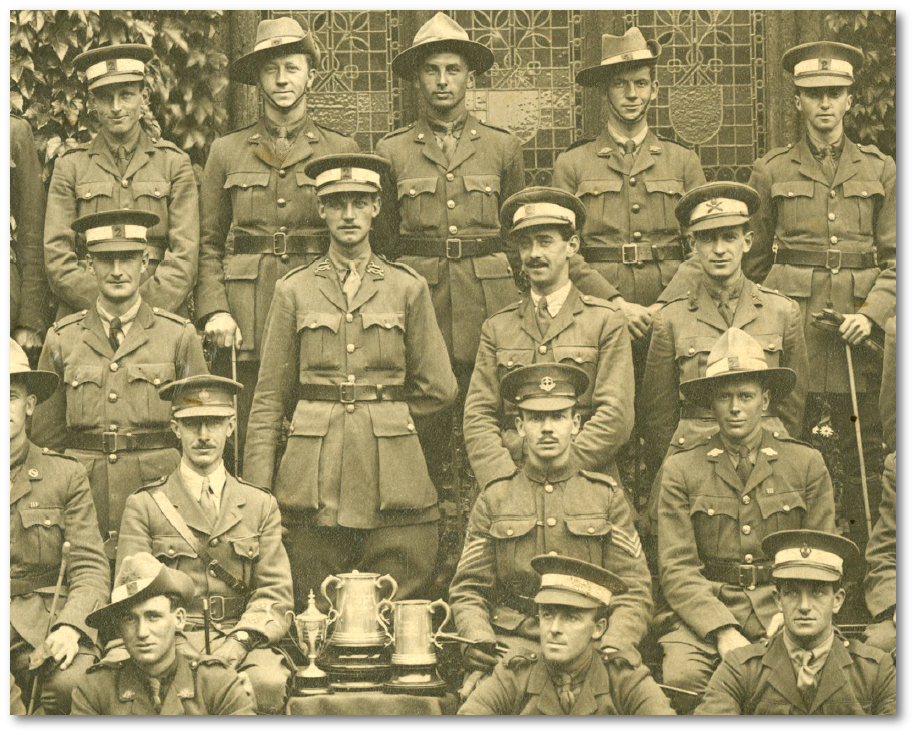
No 6 Platoon, No 2 Officer Training Battalion, Pembroke College Cambridge, 1917
This is an autographed photo of the men of No. 6 Platoon, No 2 Officer Training Battalion, Pembroke College, Cambridge, taken in the later half of 1917. As shown here, it is hard to distinguish the individuals, however now digitised, it is available in high resolution via the State Library of Queensland's catalogue.
Of the 34 soldiers pictured, 7 have been identified as Australian, 3 from New Zealand, the remainder are from the United Kingdom.
Australian Officer Cadets
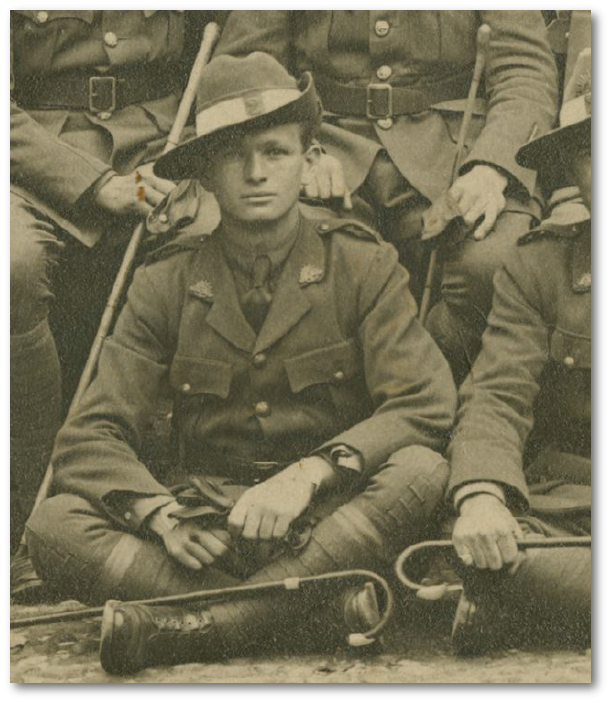
Angus MacDonald BAXTER, 42nd Infantry Battalion
Angus MacDonald BAXTER, 42nd Infantry Battalion, served alongside his father in France. Just a few months prior to this photograph, his father had died of wounds received after they were bombarded by high explosive shells in their dugout. Angus Baxter rejoined his unit as Lieutenant, but applied for and was granted four months leave to Australia, he would never return to the war.
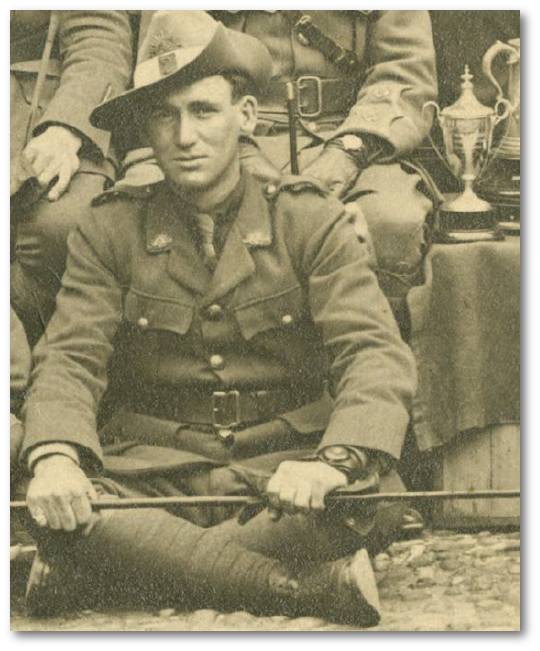
Richard Duncan DAVEY, 33rd Infantry Battalion
Richard Duncan DAVEY, 33rd Infantry Battalion, was just 18 years old when he enlisted while still a student. Davey left Sydney in May 1916 and by the end of that year had already been promoted to Corporal. Davey rejoined his unit after graduating from OC school, but was severely shell shocked at Passchendaele on 12 October 1917, after being blown up and buried. Lieutenant Davey was returned to Australia in March 1918; he later studied medicine at the University of Sydney, and became a surgeon, he died in 1948.
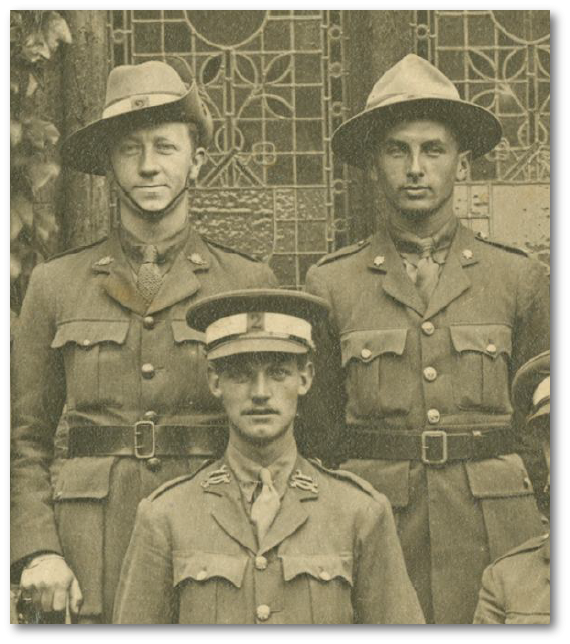
Horace JEFFREYS, 8th Field Ambulance
Horace JEFFREYS [aka Jefferys], from Haberfield, NSW, enlisted in June 1915, aged 22. He was assigned to 8th Field Ambulance and was deployed to several hospital and troop transport ships, before being transferred to the 53rd Infantry Battalion, in France. Early in 1918 he was court martialed for possession of a camera, but continued to serve until he accidentally broke a bone in his right foot and was returned home in January 1919. Jefferys went on to serve during the Second World War.
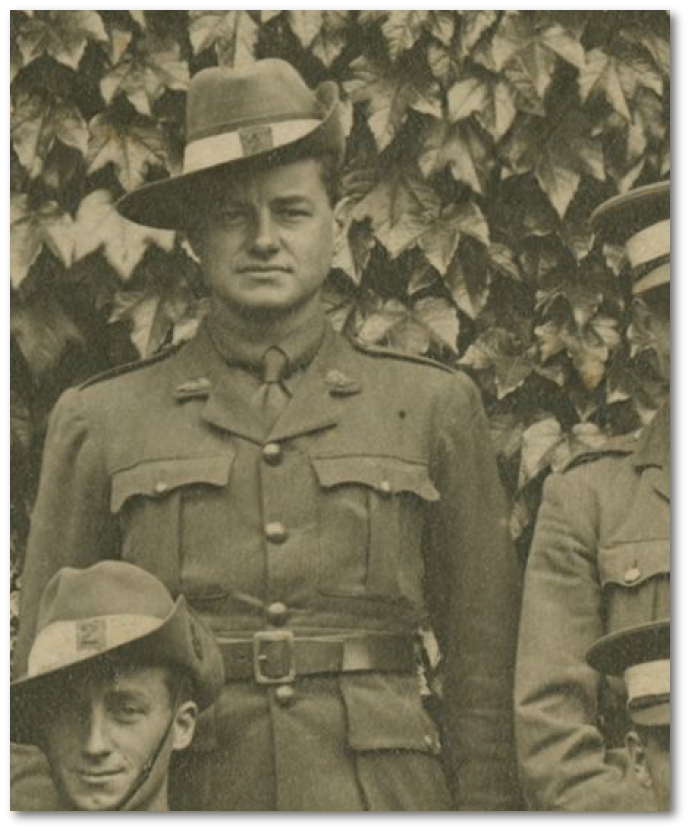
Charles Teesdale MAIN, 35th Infantry Battalion
Charles Teesdale MAIN, a chemist from North Adelaide, enlisted the day after the Allied landing at Anzac Cove in April 1915 and was assigned to 11th Field Ambulance Brigade, and later also served with the 35th Infantry Battalion. Main was killed by a high explosive shell near the Passchendaele Cemetery and was buried where he fell, 12 October 1917, by his battalion. His brother Lieutenant Frederick Main, served as a Driver and Gunner with the 8th Field Artillery Brigade, he returned to Australia in 1917 after being wounded in the jaw by shrapnel. Frederick Main named his son after his late brother Charles, and went on to serve in the Second World War.
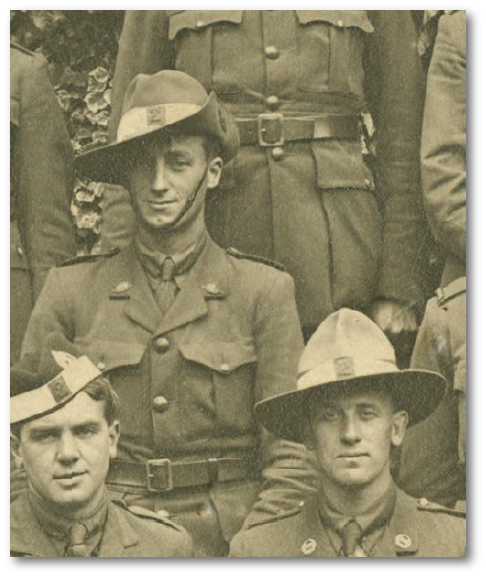
Arthur Wiliam RAY, 32nd Infantry Battalion
Arthur William RAY was initially assigned to the 7th Infantry Battalion in 1916, Arthur Ray was transferred to the 59th and later the 32nd, where he served until being demobilized in January 1919. Ray remained in England for several months while undergoing training at the Ford Atlas Works in motor vehicle repairs, before returning to Australia in September 1919.
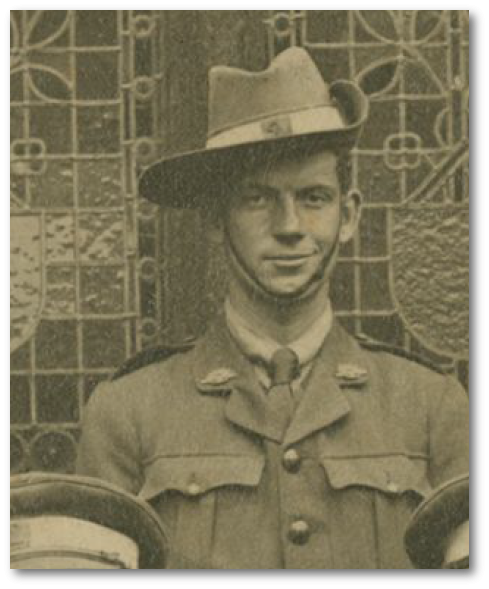
Ernest Maxell SHEARWOOD, 53rd Infantry Battalion
Ernest Maxwell SHEARWOOD, enlisted in the 53rd Infantry Battalion in July 1915. He had been wounded several times in the head and neck by shrapnel, before attending Officer training school, followed by Sniping and Observing School & Intelligence School shortly after. When he rejoined his unit, in May 1918 it was as Intelligence Officer. Sadly Shearwood was killed by an enemy shell during an attack on Peronne, on the Somme, 1 September 1918.
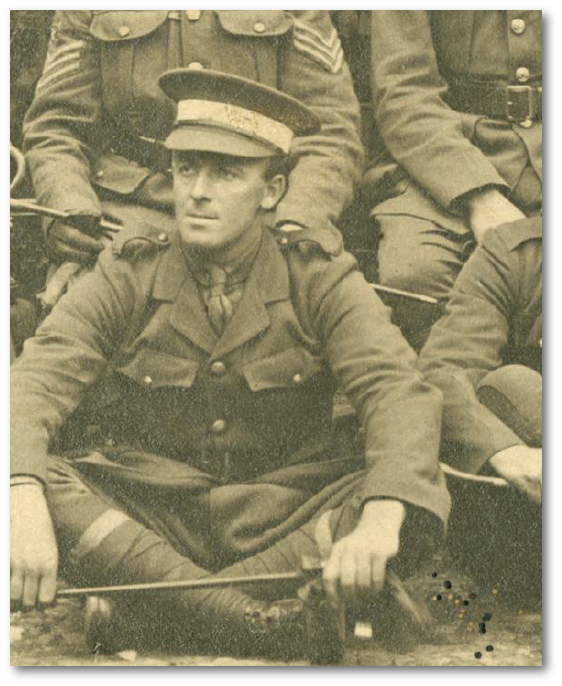
Alfred Ernest TOOTELL, 9th Field Company Engineers
Alfred Ernest TOOTELL, a motor mechanic from Queenscliff, Victoria, joined the 33rd Infantry Battalion, in 1916. He transferred to the 9th Field Company, ‘A’ Engineers, which his father Captain Alfred Tootell had commanded. He was killed in action, 30 August 1918, at Road Wood, near Peronne, where the unit was constructing bridges over the River Somme. He died just a few months after his father had returned home to Australia.
New Zealand Officer Cadets
- NZA: Clement Arthur DARTNALL
- NZA: Charles Brison LEPPER, Wellington Regiment, Military Cross
- NZA: George Henry LURY, 5th Auckland Battalion
UK Officer Cadets
- Frederick John ARCHER, Sherwood Foresters
- Robert Noble BEASLEY, Manchester Regiment
- O.F. BROWN, Staff Sergeant
- John Alfred CLAYTON, Royal Welsh Fusiliers
- Harry FLETCHER, Lancashire Fusiliers
- William David FOWLER, Seaforth Highlanders
- John William HEDLEY, King’s Own, Royal Lancashire Regiment
- Norman HOWARTH, Alexandra, Princess of Wales Own, Yorkshire Regiment
- Walter Herbert JOYCE, London Regiment, (108th Canadian Infantry) died 22.3.1918
- Edwin Craven MIDGLEY, Special List, MC
- Robert Kerr MILNE, War Office
- J.W. MORGAN, Royal Engineers
- Robert MORRISON, Machine Gun Corps, died 14.4.1918
- John Edward PETYT, Manchester Regiment, died 27.3.1918
- John Henry POOLE, Worcestershire Regiment
- S.J. REED, Royal Welsh Fusiliers
- George Hammond RENTON, Prince of Wale’s Own
- Will Blakeman SCARTH, London Regiment
- E.J. SCREEN, Labour Corps
- A. SWANSON, Seaforth Highlanders
- George Stanley TUTT, Machine Gun Corps
- Edgar WOODHEAD, Prince of Wale’s Volunteers
- William WRIGHT, Northumberland Fusiliers
Further reading:
- NAA: Baxter, Angus MacDonald
- NAA: Davey, Richard Duncan
- NAA: Jeffreys, Horace
- NAA: MAIN, Charles Teesdale
- NAA: RAY, Arthur William
- NAA: SHEARWOOD, Ernest Maxwell
- NAA: TOOTELL, Alfred Ernest
- Battle of Passchendaele
- Battle of Mont Saint-Quentin. (2016, February 18). In Wikipedia, The Free Encyclopedia. Retrieved 23:33, March 17, 2016
- Unit Diaries: 9th Field Company, Australian Engineers, August 1918
- Forbidden Cameras, State Library of Queensland WW1 blogs
Comments
Your email address will not be published.
We welcome relevant, respectful comments.